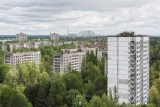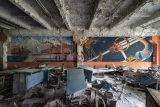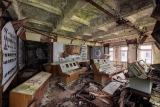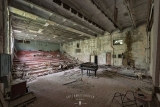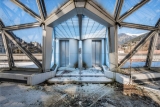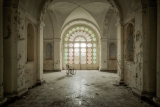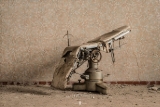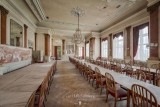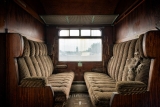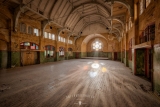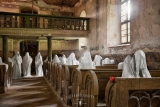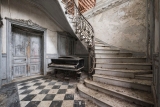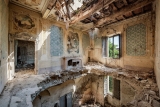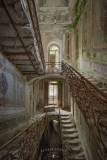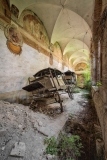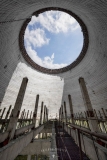Works
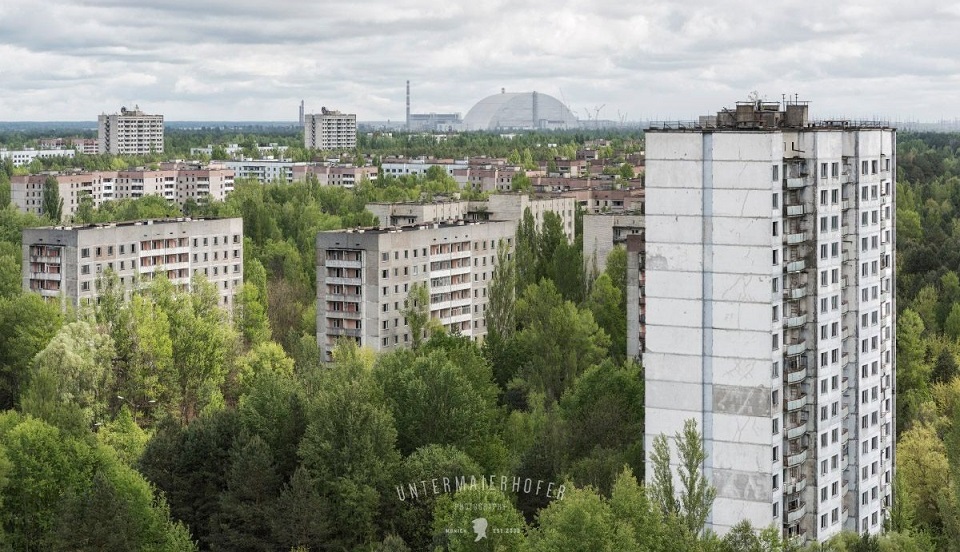
PETER UNTERMAIERHOFER │ WHEN TIME STOOD STILL
THE CHERNOBYL PICTURES & OTHER LOST PLACES PHOTOGRAPHS
Like hardly anywhere else in the world, in the city of Pripyat close to Chernobyl belief in progress and apocalyptic doom collide in vehement immediacy. In 2017, Peter Untermaierhofer had the opportunity to take photos over five days in officially accessible as well as in normally closed buildings and facilities within the military-controlled restricted area. In addition to seven large-format works that were created in Pripyat / Chernobyl, the exhibition will also showcase 12 fine art prints of other lost-place photographs that have not previously been shown in the gallery.
9 January 2020 – 22 February 2020
On 9 January beginning at 7 p.m. all are invited to the opening reception at the gallery. The artist is present.
The following works are presented in the show:
PETER UNTERMAIERHOFER │ WHEN TIME STOOD STILL
After the devastating nuclear accident that occurred at the Chernobyl nuclear power plant in Ukraine on April 26, 1986, an area of approximately 2,000 square kilometers northwest of the damaged nuclear reactor became part of the restricted area, in which life-threatening radiation levels were present. It took 36 hours after the total meltdown that the almost 50,000 inhabitants of the city of Pripyat, not far from Chernobyl in this contaminated area and founded in 1970 as an ideal socialist city for the carpentry workers, were evacuated by bus. In the belief of a soon return, the residents had taken only the bare necessities, so that the current buildings on an area of approx. 600 hectares are largely still in the state they were in 1986. Thanks to extensive decontamination measures, radiation exposure has been reduced to such an extent over the years that Pripyat can be entered at least temporarily today. The city, which is guarded by the military, has been opened to tourism in July 2011. Entry into the restricted area is only possible with booked tours.
If today Pripyat near Chernobyl is one of the tourist magnets in Eastern Europe with around 1 million visitors annually, it is mainly because of the creep factor of a formerly radioactive site, but also because of the morbid appearance of a decaying ghost town, in which time seems to have stopped. Like hardly anywhere else in the world, belief in progress and apocalyptic doom collide in vehement immediacy, and the consequences of uncontrollable technical processes become visible, which are directed not only against their former builders, but against all of mankind. In 2017, Peter Untermaierhofer had the opportunity to take photos over five days in officially accessible as well as in normally closed buildings and facilities within the military-controlled restricted area. He succeeded in capturing the oppressive atmosphere of death and chaos in haunting photographs, choosing a visual language for each location that shows the full extent of the catastrophy, but at the same time sublimates the oppressive subject and creates an aesthetic distance.
In addition to seven large-format works that were created in Pripyat / Chernobyl, the exhibition will also showcase 12 fine art prints of other lost-place photographs that have not previously been shown in the gallery.
Born in Eggenfelden in 1983, Peter Untermaierhofer completed a degree in media technology at the Deggendorf University of Technology from 2006 to 2012, and also spent one semester in Photography at the James Cook University in Townsville, Australia in 2010. The focus of his photographic work is on places that people have left for a variety of reasons, and from which a melancholic-morbid charisma emanates when decaying. Within the worldwide photographer community dedicated to those lost places, Peter Untermaierhofer is now one of the most distinguished representatives.
